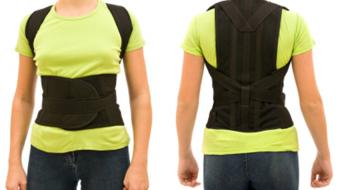Featured Videos
Scoliosis is a lateral (toward the side) curvature in the normally straight vertical line of the spine. Congenital scoliosis is caused by a bone abnormality present at birth, however there are other causes of scoliosis as well. The diagnosis of scoliosis and the determination of the type of scoliosis are then made by a careful bone exam and an X-ray to evaluate the magnitude of the curve. Get the answers you need to take control of your health from our complementary scoliosis resources.
Scoliosis is an abnormal curve in the spine. The word scoliosis comes from the Greek word scolios, meaning curved or crooked. There are several types of scoliosis, and it occurs most often in children between 9 and 15 years of age.
Scoliosis Symptoms
Typically, scoliosis is classified as congenital, meaning there were vertebral deformities or anomalies present at birth, or acquired. Congenital scoliosis accounts for about 15 to 20 percent of all cases, while acquired accounts for 80 to 85 percent of cases.
Scoliosis symptoms include:
• One shoulder blade that’s more prominent than the other
• Uneven shoulders, waist or hips
To make the diagnosis of scoliosis, a physician will perform a physical examination. The primary care provider will look at the curve of the spine from the sides, front and back and get the patient to touch his or her toes. The doctor may also perform a neurological exam to check for numbness, weakness and abnormal reflexes.
Scoliosis Treatment
Once any dangerous cause of scoliosis has been ruled out, the most important factor that determines treatment is the likelihood of progression. In many cases, scoliosis treatment isn’t required. Some children will need to wear a scoliosis brace to keep the curve of the spine from getting worse. Wearing a brace won't cure scoliosis, but it usually prevents further progression of the curve. In some cases, scoliosis surgery is required to prevent the spinal curvature from getting worse.
The most common type of scoliosis surgery is called spinal fusion, in which surgeons connect two or more of the bones in the spine (vertebrae) together. Then, bone or a bone-like material is placed between the vertebrae and held in place by metal rods, screws, wires or hooks. A patient may need checkups every four to six months to monitor for changes in the curvature of the spine. Most patients who wear scoliosis braces keep them on day and night, and stop wearing them after the bones stop growing.
Talk to your rheumatologist if you'd like more information on scoliosis.
Visit HealthChoicesFirst.com for more videos and resources on arthritis.

